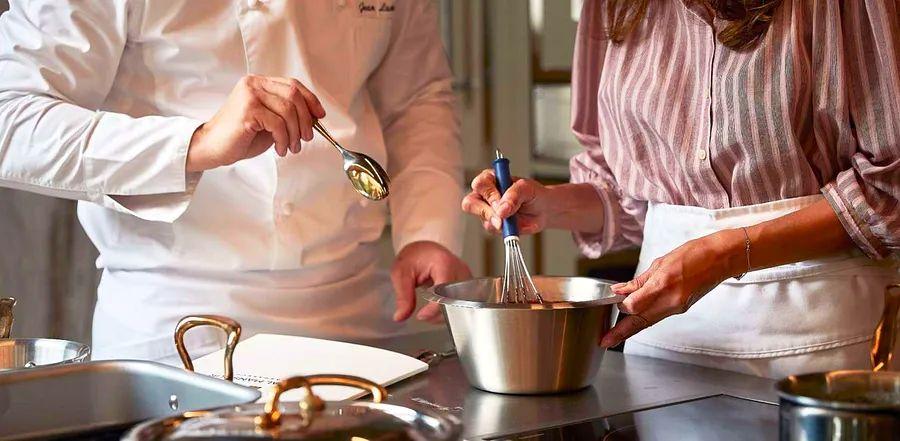6 Cooking School Lessons I Still Use Every Day in My Kitchen

In 2012, I joined the ranks of eager students at the Culinary Institute of America (CIA) in Hyde Park, NY. Referred to as the 'Harvard of culinary schools,' I felt incredibly proud to be there. Although I eventually transferred to a larger university, my time at CIA was formative. I picked up a wealth of knowledge, much of which I still rely on today, even in my tiny 400-square-foot apartment kitchen in Manhattan. Later, I returned to cooking school for a graduate program in culinary science at Drexel University. From expansive kitchens to a compact apartment setup, I've kept many skills in my culinary toolbox. Let me share some of the essentials with you.
Top Culinary School Tips to Use in Your Own Kitchen
Mastering Knife Skills
The first couple of months at cooking school were all about refining knife skills. We had to learn classic French knife cuts like julienne, brunoise, batonnet, tourné, and chiffonade. While I only use a handful of these cuts at home, I still make it a point to practice my knife skills for both accuracy and safety. I learned the proper way to hold a knife, how to maintain and sharpen it, and how to avoid cuts. My knife training also taught me the best way to use a cutting board, a lesson that continues to serve me in my home kitchen.
Stabilizing Your Cutting Board
A cutting board is closely tied to knife skills, but this tip from cooking school is worth mentioning on its own. To prevent your cutting board from sliding around while you're chopping, simply place a damp kitchen towel or paper towel underneath it. This small trick makes a huge difference. Believe me, it’s a game-changer!
The Power of Kosher Salt
In any professional kitchen, you'll find a container of kosher salt sitting on the counter. After culinary school, I never touched Morton’s iodized salt again. Cooks avoid using iodized salt during cooking because it has a finer texture and less flavor. Instead, they choose kosher salt, which has larger crystals, is easier to pinch, and delivers better flavor. You'll always find a small jar of kosher salt on my counter, just like in the restaurants.
Incorporating Mirepoix
The French Foundation: Mirepoix
Mirepoix is a simple yet essential mixture of diced onions, carrots, and celery—usually in a 2:1:1 ratio. This flavor-packed base is the cornerstone of many dishes, from soups and sauces to hearty stews. While I might not use it for classic French sauces in my home kitchen, it’s perfect for flavoring roasted meats, stews, and even a rich bolognese.
Perfecting the Roux
If you’re from Louisiana, you probably didn’t need cooking school to learn how to make a roux—it’s just second nature! For the rest of us, it’s a crucial lesson. A roux is simply the combination of flour and fat (butter or oil) heated together, but getting the right color and flavor is an art. This skill comes in handy for everything from creamy mac and cheese to gravy and soups.
Mastering Vinaigrette Basics

1

2

3

4

5
Evaluation :
5/5